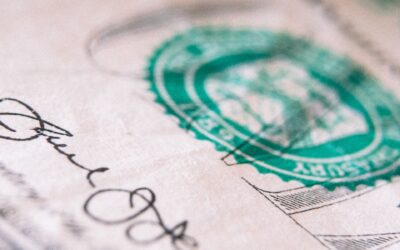Tax Implications of Investing in Precious Metal Assets
These days, some IRA owners and investors may be worried about being overexposed to equities.
That could be you.
But the safest fixed income investments (CDs, Treasuries, and money-market funds) are still paying microscopic interest rates.
For example, when this was written, the 10-year Treasury was yielding about 1.92 percent. Ugh!
Meanwhile, the pandemic might or might not be coming to an end, the economy might or might not be okay, and inflation might or might not be controlled.
Who knows?
In this uncertain environment, investing some of your IRA money in gold or other precious metals such as silver and platinum may be worth considering. Ditto for holding some precious metal assets in taxable form. This article explains the federal income tax implications. Here goes.
Precious Metal Assets in Your IRA
At first blush, our beloved Internal Revenue Code appears to throw cold water on the idea of holding physical precious metal assets in an IRA.
As a general rule, a physical IRA investment in any metal or coin is treated as the acquisition of a collectible for federal income tax purposes.
As such, the transaction is characterized by the tax code as a taxable distribution from your IRA to you (the IRA owner), followed by a purchase of the metal or coin by you.
In effect, this general rule appears to prohibit you from using an IRA to invest in precious metals or coins made from precious metals.1 But there’s a great big exception to the preceding general rule.
Under the exception:2
- You can use your IRA to invest in certain gold, silver, and platinum coins and in gold, silver, platinum, and palladium bullion that meet the purity standards.
- Your IRA trustee or custodian, rather than you, must hold the coins or bullion.
This article covers the tax results of using an IRA to make direct investments in physical precious metal coins and bullion and indirect precious metal investments in the form of shares of specialized exchange traded funds (ETFs) and mining companies.
We also cover the tax considerations of holding these investments in taxable form.
Onward!
Your IRA Can Buy Precious Metal Coins and Bullion
Thanks to the exception, IRAs can own certain precious metal coins and bullion. Examples include:
- American Gold Eagle coins;
- Canadian Gold Maple Leaf coins;
- American Silver Eagle coins;
- American Platinum Eagle coins; and
- gold, silver, platinum, and palladium bullion that meets the purity standards.
For example, gold bars must be 99.5 percent pure or better, and silver bars must be 99.9 percent pure or better.3
So far, so good.
The big practical concern is finding an IRA trustee that’s willing to set up a so-called self-directed IRA for you and facilitate the physical acquisition, transfer, and storage of precious metal assets held in that IRA.
Only a relatively few outfits are willing to act as precious metal IRA trustees. None of the major brokerage firms are on board (as far as we can tell).
You can find willing precious metal IRA trustees through an internet search. The trustee will arrange for the physical storage of precious metal assets owned by your IRA. For example, one major storage facility is the Delaware Depository in Wilmington, Delaware. (We don’t have any relationship to the Delaware Depository, and we are not endorsing it. We mention it here only as an example.)
The precious metal IRA trustee may charge an account set-up fee, an annual administrative and maintenance fee, and an annual fee for storage and insurance. Additional fees may be charged for account contributions, distributions, and commissions for precious metal purchases and sales. Fees vary, but you are not usually looking at big bucks here.
Your IRA Can Buy Shares in Precious Metal ETFs
So, you don’t want to deal with the issues surrounding physical ownership of precious metal coins or bullion by your IRA?
Fair enough.
A simpler option is using your IRA to buy shares of an ETF that tracks the value of a particular precious metal.
Back in the day, there were concerns that an IRA’s acquisition of shares in a precious metal ETF could be treated as the acquisition of a collectible. As explained at the beginning of this article, that would result in a deemed taxable distribution from the IRA. Not good!
Thankfully, the IRS has decided that IRAs can buy shares in precious metal ETFs that are classified as grantor investment trusts, without any adverse federal income tax consequences.4
If you have doubts about IRAs being allowed to own a particular precious metal ETF, take a look at the tax section of the fund’s prospectus, which should be available online. Presumably, when a reputable brokerage firm is acting as the IRA trustee, it won’t let an IRA buy shares in an ineligible ETF in the first place.
Your IRA Can Buy Precious Metal Mining Stocks
An even more indirect way of investing in precious metals is to have your IRA buy common stock shares of mining companies. There is absolutely no tax-law problem with that idea.
An example would be buying shares of Barrick Gold Corporation (NYSE trading symbol: GOLD). Barrick is one of the largest mining companies, producing gold and copper in 13 countries. (We are not endorsing Barrick. We mention the company for informational purposes only.)
With IRAs, Age-Related Considerations
Since precious metal prices are volatile, using an IRA to invest in precious metal assets becomes more problematic as you reach retirement age.
Also, once you reach age 72, you must start taking annual required minimum distributions (RMDs) from your traditional IRA(s).
For this purpose, traditional IRAs include SEP-IRAs and SIMPLE IRAs.
The point is, you must have sufficient liquidity in your traditional IRA(s) to take your annual RMDs. But if you have several traditional IRAs, you need not take an annual RMD from each one.
The only requirement is that you withdraw the minimum annual amount from one or more accounts.5
For example, you could have one IRA that you use to invest in precious metal bullion and another IRA that you use to invest in liquid assets such as publicly traded stocks and mutual funds.
You can take the annual RMD amount from the liquid account while leaving the precious metal account untouched.
Precious Metal ETFs and Mining Stocks Held in Taxable Accounts
There’s nothing to prevent you from holding gold coins, bars, and other precious metal bullion in a safe-deposit box—or burying the stuff in the backyard next to your dear departed dog’s gravesite. It’s probably a better idea, though, to hold shares in precious metal ETFs and mining companies in a taxable brokerage firm account.
Taxes on ETFs
Understand this: long-term capital gains from selling precious metal ETF shares held in a taxable brokerage firm account are currently subject to a 28 percent maximum federal income tax rate rather than the standard 20 percent maximum rate for garden-variety long-term gains.6
That’s because the gains are considered to be from selling collectibles.
Short-term gains from selling precious metal ETF shares held in a taxable brokerage firm account are currently subject to a maximum federal rate of 37 percent.
Both long-term gains and short-term gains can also get hit with the dreaded 3.8 percent net investment income tax (NIIT).
Finally, you also may owe state income tax on these gains.
Taxes on Mining Stocks
Long-term gains from selling mining stocks held in a taxable brokerage firm account are currently subject to the standard 20 percent maximum federal rate.
Short-term gains from selling mining stocks held in a taxable brokerage firm account are currently subject to a maximum federal rate of 37 percent. Both long-term gains and short-term gains can also get hit with the 3.8 percent NIIT, and you may owe state income tax too.
Takeaways
Where do you invest your IRA money?
- In safe investments where the interest rates are
- low In equities where volatility is happening
- In precious metals, as we explain in this article
For example, your IRA can
- buy precious metal coins and bullion;
- acquire shares in precious metal ETFs;
- and invest in precious metal mining stocks
You likely will have to use Google to find trustees who can handle precious metal investments.
And of course, you don’t need your IRA or other retirement plan to invest in precious metals or ETFs.
But when you buy such investments outside the retirement plan, you can face the 28 percent collectibles tax rate versus the usual long-term capital gains rate of 20 percent.
1 IRC Section 408(m).
2 IRC Section 408(m)(3).
3 IRC Section 408(m)(3)(A).
4 In Private Letter Ruling (PLR) 200732026, the IRS ruled that IRAs could buy shares in a gold ETF. Apparently, the ETF in question was the SPDR Gold Trust
(trading symbol GLD), which is the most popular gold ETF. Similarly, in PLR 200732027, the IRS ruled that IRAs could buy shares in a silver ETF. Apparently, the ETF in question was the iShares Silver Trust (trading symbol SLV), which is the most popular silver ETF.
5 Reg. Section 1.408-8, Q&A-9.
6 IRC Sections 1(h)(4); (1)(h)(5).
Buying a new Electric Vehicle? Know this tax info..
Buying an Electric Vehicle? Know These Tax Law ChangesAre you thinking of buying an electric vehicle or a plug-in hybrid? And are you looking to benefit from the $7,500 tax credit? If so, you have much to consider—thanks to the newly enacted Inflation Reduction...
Earn 9.6% for 6 Months Guaranteed!
Earn 9.6% for 6 Months Guaranteed!September 2022 More on Earning 9.62 Percent Tax-Deferred You can buy from now through October 31, 2022, Series I bonds from the U.S Treasury that pay 9.62 percent tax-deferred interest. If you buy now, you earn that 9.62 percent for...
Inflation Alert: Consider Investing in TIPS
Inflation Alert: Consider Investing in TIPS The Fed is finally taking aggressive action to fight inflation, but will it work? Where’s the stock market headed? Who knows? Real estate might be a good inflation hedge, but it’s a non-liquid asset and no sure thing....
Is a Property Fix-up and Sale an Investor or a Dealer Property?
Is a Property Fix-up and Sale an Investor or a Dealer Property? Background I’m an independent computer consultant who nets $100,000 from my proprietorship. I bought a house in March 2019, fixed it up, and sold it in April 2020 at a net profit of $85,000. I bought...
Health Savings Accounts: The Ultimate Retirement Account
Health Savings Accounts: The Ultimate Retirement Account Looking to save for retirement? The first account you should open and fund is not an IRA (regular or Roth) or 401(k). If you qualify, your first retirement account should be a Health Savings Account (HSA). Don’t...
The Mom and Dad Hotel
Imagine this: Tax deduction for you Tax-free income for Mom and Dad It doesn’t have to be Mom and Dad. The tax-free income can go to your brother or sister, or your best friend. To make this work, you need to have a business reason to travel and stay overnight at the...






